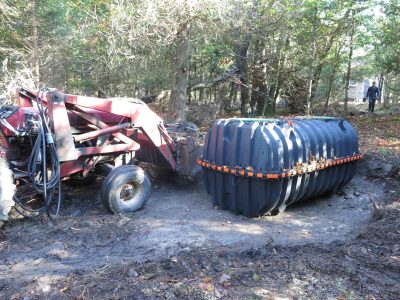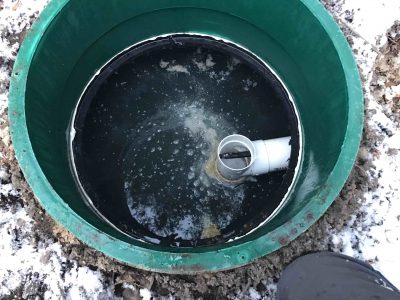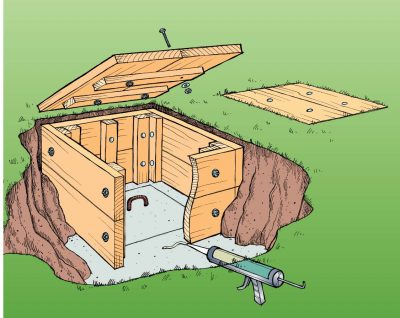 Every septic tank has lids, but tanks are almost always installed below ground level. Traditionally you needed to dig down through soil to get to the access hatches of your tank for pump-outs and inspections, and the hassle of this job is one reason why people don’t have pump-outs done often enough. It’s just way too much work finding the tank, digging out soil from above the hatches, then replacing the soil and re-establishing grass. A much better option is to have ground-level access hatches so you can easily get down to the tank lids. There are a couple of ways to do this.
Every septic tank has lids, but tanks are almost always installed below ground level. Traditionally you needed to dig down through soil to get to the access hatches of your tank for pump-outs and inspections, and the hassle of this job is one reason why people don’t have pump-outs done often enough. It’s just way too much work finding the tank, digging out soil from above the hatches, then replacing the soil and re-establishing grass. A much better option is to have ground-level access hatches so you can easily get down to the tank lids. There are a couple of ways to do this.
 Modern plastic septic tanks usually have what they call “risers”. These are short, vertical tunnels with lids on top. The riser leads down to the tank where there may or may not be a second cover over the tank body itself. There’s never any digging required with this setup, so it’s good. If your plastic septic tank doesn’t have risers and ground-level covers, you can usually retrofit them using hardware from the tank manufacturer. All plastic tank manufacturers I’ve seen sell ground-level access hardware.
Modern plastic septic tanks usually have what they call “risers”. These are short, vertical tunnels with lids on top. The riser leads down to the tank where there may or may not be a second cover over the tank body itself. There’s never any digging required with this setup, so it’s good. If your plastic septic tank doesn’t have risers and ground-level covers, you can usually retrofit them using hardware from the tank manufacturer. All plastic tank manufacturers I’ve seen sell ground-level access hardware.
 Concrete septic tanks don’t usually come from the factory with any kind of riser, but you can build some yourself of you want to avoid digging down to your septic tank in the future. It’s definitely a good idea. I made my first set of risers and lids from pressure treated lumber, but they rotted out in 10 years.
Concrete septic tanks don’t usually come from the factory with any kind of riser, but you can build some yourself of you want to avoid digging down to your septic tank in the future. It’s definitely a good idea. I made my first set of risers and lids from pressure treated lumber, but they rotted out in 10 years.
If I had made them from the type of pressure treated lumber manufactured for wood foundations, they’d still be fine. Wood is a good choice as long as you get the stuff that definitely won’t rot no matter what. Ordinary pressure treated wood will rot, so don’t use it.

Photo credit: Steve Maxwell
I’ve since replaced the old rotten wood with concrete risers that I poured in place on top of the tank, with a patio slab on top as a lid. This system works perfectly. I strongly recommend this option if you’re experienced mixing and pouring concrete at all.
The video below shows how you can make simple plywood forms to create risers. Besides making access to the tank fast and simple, concrete risers also keep roots from invading your tank through the lids. The seal between the concrete riser and the top of the tank is impenetrable, even to eager roots from deciduous trees.
